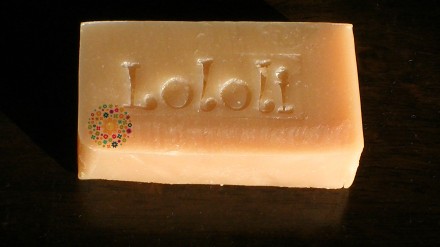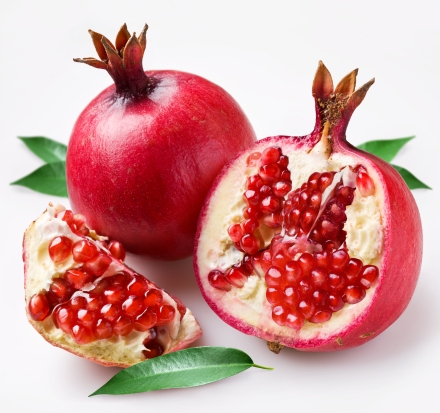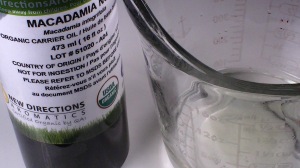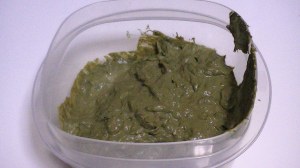We want to wish you a very happy and blessed New Year. May we all have the strength to get through whatever comes our way in 2015.
A brief history of soap
Please visit http://www.lololicosmetics.com to sign up for our newsletter (at the bottom of the page) to receive information on discounts and giveaways!
A brief history of soap
The word “Soap” is derived from the Celtic word “Saipo”. Soap has been in use for several thousand years; although, not necessarily accessible to the common person. There is evidence that early civilizations, such as Phoenician and Roman, made soap but for industrial and medical purposes, not for cleansing the body. For instance the Romans applied oil to the skin and used a strigil to scrape the skin down to remove dirt.
It’s believed that early soap makers used animal fats and ashes to produce soap. They combined ashes, most likely plant or wood ashes, with water and added a fat to the solution. This mixture was then boiled, with ashes being repeatedly added, as the saponification process took place. During the Middle Ages slaked lime was used to causticize the alkali carbonate thereby making it easier to saponify neutral fats.
In England, early soap makers had to pay a high tax on all the soap that they produced. This tax was as high as three pence per pound. Tax collectors placed special lids on boiling pans that could be locked at night so that soap could not be made in secret. The state final abolished this tax in 1853.
What is soap anyway?
Soap is defined as an alkali salt of fatty acids, which when it is dissolved in water has the ability to remove dirt from surfaces. The soap molecules contain a water-insoluble part (hydrophobic) or fatty acid or long chain carbon group. This part attaches itself to the surface and to dirt. It also has a water-soluble part (hydrophilic) that attaches itself to water. The process of cleaning a surface begins with first wetting the soiled surface. Soap can aid in this by decreasing the surface tension of water. A layer of soap is absorbed at the boundary of the surface and water, and the soil and water. Often there is a thin layer of oil that adheres dirt to a surface. Soap aided by warm water and agitation, will break up dirt and this oily layer, if present, and disperse the dirt into the wash water. The soap will then form a colloid that will prevent the dirt from re-depositing on the surface so that the dirt can be rinsed away in wash water.
Ingredient of the Month: Vitamin E
Vitamin E
Vitamin E was first recognized in 1922, obtained in pure form in 1936 and finally chemically identified in 1938. It is a fat soluble compound found in certain plants and in the leaves of certain vegetables (such as spinach and broccoli). There are also several similar compounds that are classified as tocopherols.
Vitamin E is an antioxidant, which means that it prohibits oxidation of body tissue by peroxides and free radicals. It may prolong the active life span of biological membranes by slowing the rate of oxidation. It is use commercially to prevent fats, including vegetable oil, from going rancid.
You can find Vitamin E in our new Vitamin E soap that also contains Apricot Kernel Oil, Olive Oil, Coconut Oil, and of course Shea Butter. This soap will be available July 20, 2014.
Ingredient of the Month: Pomegranate Oil
Pomegranates, botanical name Punica Granatum, are said to have their origins in Iran, and have been cultivated since antiquity. Punica granatum is a fruit bearing deciduous tree or shrub. These shrubs can now be found in Middle East, Northern Africa, the Mediterranean, Central Asia and the Caucasus. In 1796 Spanish settlers brought the tree to the Americas and they are now grown in Arizona and California.
The fruit is rich in Vitamin C and K and polyphenols. The seeds are a good source of fiber. The oil contains Punicic acid (65.3%), Palmitic acid (4.8%), Stearic acid (2.3%), Oleic acid (6.3%) and Linoleic acid (6.6%). The oil is said to improve elasticity in the skin and that it helps slough off old skin cells quicker. Pomegranate oil is also believed to be anti-inflammatory, soothing and moisturizing to dry and mature skin, and for people with eczema and psoriasis.
You’ll be able to find Pomegranate oil in our Pomegranate and Mango soap, which is coming soon!
Visit www.lololicosmetics.com to buy our handmade soaps.
Mind Over Matter!
***Visit http://www.LololiCosmetics.com to shop for our handmade soaps.***
Don’t let doubt and negativity deter you from your hopes and dreams!
Motivated by Love
The more you are motivated by love, the more fearless and free your action will be.
-Attributed to Dalai Lama XIV
Love
Even after all this time the Sun never says to the Earth, “You owe me.” Look what happens with a love like that, it lights the whole sky.
-Hafiz
What is Love?
Love is patient, love is kind. It does not envy, it does not boast, it is not proud. It is not rude, it is not self-seeking, it is not easily angered, it keeps no record of wrongs. Love does not delight in evil but rejoices with truth. It always protects, always trusts, always hopes, always perseveres.
Love never fails.
I Corinthians 13: 4-8
The History of St. Valentine’s Day
It’s that time of year again. Cupid is dusting off his arrow some, while others are at home in old sweats eating Hagen Daz. St. Valentine’s Day can elicit strong emotions in a lot of people, but how did it all get started?
The origins of Valentine’s Day remain a subject for debate. There were at least three Catholic martyrs named Valentine, two of which that may have been executed around February 14. Myth has it that one St. Valentine was a priest who defied Emperor Claudius II by continuing to marry young couples after Claudius decided to ban marriage for young men because he believed that single men made better soldiers. The other St. Valentine was believed to have helped Christians escape the torture of the Romans as was jailed for it. Once in jail it’s said that he fell in love with a young girl, possibly the jailer’s daughter, and wrote her a note signing it “From your Valentine”.
Why we celebrate Valentine’s Day on February 14 is also up for speculation. It may be because one or both St. Valentines were executed on or around the Ides of February. Or it may be because of the Festival of Lupercalia. Lupercalia was a Roman pagan festival of fertility where in which a goat and a dog would be sacrificed. The hide of the goat would be cut into strips and dipped in the dog’s blood. The young women of the city would then line up to be hit with the hides. It was believed to make them more fertile. The celebration of Valentine’s Day may have been moved to coincide with this festival in an attempt to “Christianize” it.
No matter the origins of the day it has come to symbolize love and romance with printed cards, boxes of chocolate and flowers being exchanged between family members, lovers and friends.
Shop our website www.LololiCosmetics.com
Big Green Face Mask
It’s been rather frigid here in the Northeast and my skin has been suffering the consequences. My skin looks congested and clogged, and I’ve had a few breakouts. So I made the face mask featured below.
Ingredients:
Lemons – are reported to be antifungal and antibacterial. They may also aid in fading acne scars and blemishes.
Cilantro – is filled with antioxidants which help to fight free radicals on the skin. It may also absorb excess oil on the skin.
Ginger – is an astringent and may help to reduce acne.
Rosemary – is reported to have antiseptic and anti-inflammatory properties.
I combined the following ingredients in a blender.
1/4 cup of water
1/4 Aloe Vera juice
1 tsp of Witch Hazel
1 tsp of Macadamia Nut Oil
Juice of half a lemon (lemon juice should not be left on the skin for extended periods of time and may cause photo sensitivity in some)
1 tsp of grated ginger
1/2 cup of Cilantro
1 tsp of Tumeric
3 Tbsp of French Green Clay
I washed my face then applied the mask. I left it on for 15 minutes and then rinsed off with warm water.














